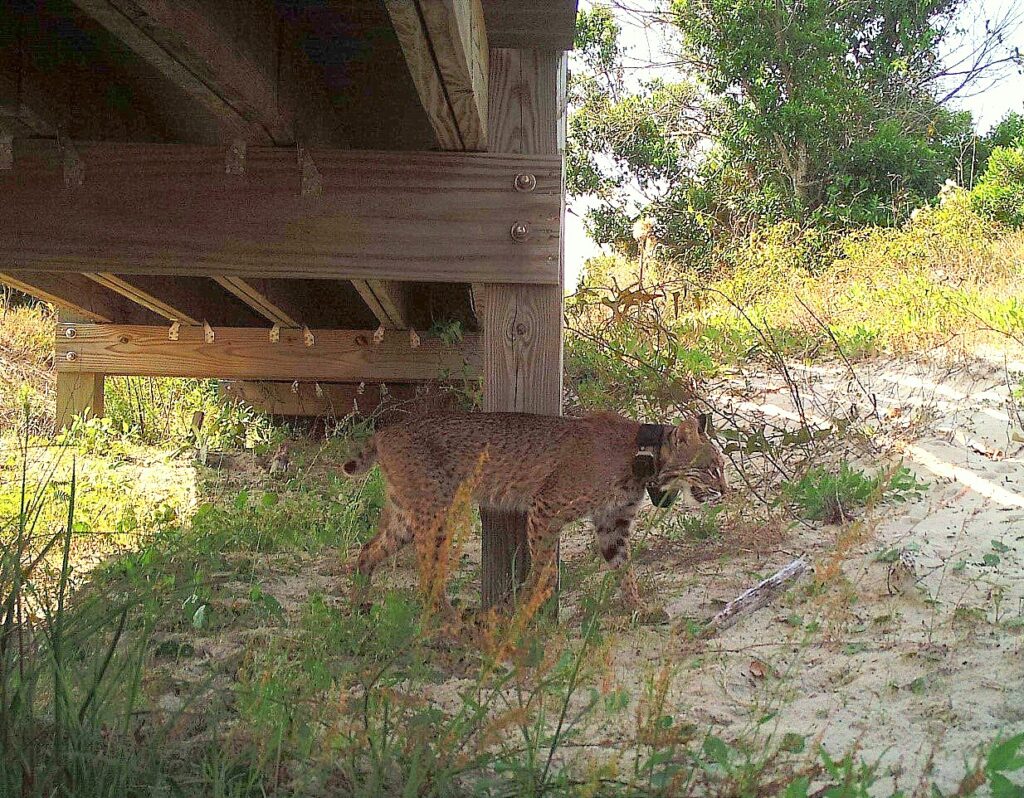By Ben Carswell, JIA Director of Conservation and Sustainability
It’s been seven years since the first photo documentation of bobcats using Jekyll Island. We are excited to share the story of Victoria, a young female bobcat whose movements we have followed since February 2020.
In 2019, with Jekyll Island Foundation support and permitting approvals from Georgia DNR, the conservation team began working to capture and fit a GPS tracking collar on a Jekyll Island bobcat with the goal of enhancing the understanding of habitat use, movement patterns, and potential reproduction by these small but powerful predators. That year attempts to capture a bobcat came up empty handed. Learning from the experience, however, the team adapted their approach and in 2020 found success within a few weeks.
Victoria, whose name is inspired by historic maps identifying the northern tip of Jekyll Island as “Point Victoria”, was estimated to be about one year old when first captured on the south end of Jekyll Island near the soccer complex. She was in good health and, as a female just entering her reproductive years, an ideal subject for closer observation of her activity. Just over one year later, Victoria was fortuitously captured again, allowing the team to fit her with a new collar for another year of tracking.
Thus far, conservation staff have recorded nearly 1200 individual point locations for Victoria spanning widely across the southern 3/4 of the Island. Tracking shows she has not left the island nor ventured to its northern end where it is suspected that another female maintains territory. She frequents the scrubby dune habitat on the far south end of the island, which is known to be a very productive area for prey species such as marsh rabbits, and often visits similar habitat bordering the marsh near the airport. The core of her range is mid-island where her movements affirm the importance of some areas Jekyll Island’s conservation staff has suspected to be high value wildlife corridors. Victoria continues to be closely monitored for any changes in patterns of movement that may indicate she is caring for kittens.
As widely ranging as bobcats need to be to find sufficient prey, Jekyll Island is limited in the number of adult bobcats it can support. Even so, the team is delighted to find that the Island appears to be able to sustain a small population. That said, when a wildlife population is small and constrained by island geography, its persistence can be tenuous. The sustained presence of these predators in our local ecosystem will come down to the success of individuals like Victoria in facing many challenges to survival and reproduction in a landscape that is wild but also never far from the human footprint.
An overarching goal of Jekyll Island’s conservation efforts is to learn how to share space with wildlife conscientiously, and the knowledge gained from JIF-supported projects like this helps make that goal attainable.
To view the many ways you can play a part in the work of the Jekyll Island Foundation’s mission, click HERE.



